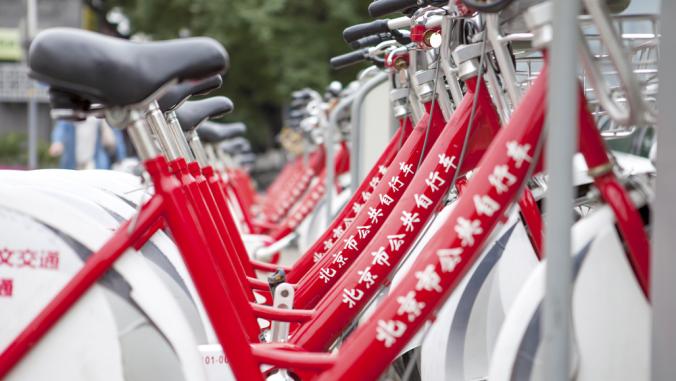The Great Wall Embraces Wall Street
<p>In the latest sign that China takes the threat of global warming seriously, Chinese business executives with close ties to the government have launched a voluntary market in Beijing to buy and sell carbon credits.</p>
Here comes a new carbon finance market, this one with Chinese characteristics.
In the latest sign that China takes the threat of global warming seriously, Chinese business executives with close ties to the government have launched a voluntary market in Beijing to buy and sell carbon credits.
Just don’t call it cap-and-trade, which is the regulatory approach embodied in the climate legislation pending in the U.S. Congress. The “cap” part of cap-and-trade remains anathema in China. As a developing country where billions of people earn less than $3,000 a year, China simply won’t accept mandatory limits on its emissions of greenhouse gases.
But the Chinese have enlisted western partners to build a market that will, as they put it, “limit and incentivize.” The theory is that a voluntary market in carbon credits will limit emissions by providing financial incentives to Chinese companies to develop renewable energy, promote energy efficiency and, above all, find environmentally-friendly ways to burn coal. Some of that money would come from outside China and would would come from within.
This could lay the groundwork for a mandatory market in the not-too-distant future.
That, at least, was my takeaway from a Low Carbon Conference held in New York that brought together leaders of the world’s big stock exchanges, energy industry executives, environmentalists and experts in carbon finance. Not surprisingly, the Chinese are looking for money from the west, specifically from companies and governments looking to offset their emissions. They argue that they can reduce emissions faster and cheaper than the U.S. or the EU. But they also expect to raise money from businesses and individuals in China that care about climate change.
One company represented at the event, the Tianping Insurance Company, has said it will become China’s first carbon neutral business, in part by buying credits. It bought its first credits last month.
David Yarnold, the executive director of the Environmental Defense Fund, which has worked with the Chinese to develop a carbon market, put things in perspective nicely:
This new partnership between Wall Street and the Great Wall flies in the face of conventional wisdom.
Today, you will witness tired conventional wisdom drawing its last breath. You will learn that China is no laggard in the race to develop clean energy and reduce global warming pollution. In fact, it is moving ahead.
Just five years ago, owho would have thought that the New York Stock Exchange would be hosting a meeting on carbon trading? Who would have thought that China would have an environmental exchange?
Of course, it’s no surprise that Yarnold and business-friendly EDF, which pioneered emissions trading in the U.S. during the first Bush administration, would endorse a market-based solution to climate change. As he put it:
Many believe markets are the source of environmental problems. They think that the relentless search for profit that leads to the sacrifice of the environment and that money is the root of all environmental evil. In contrast, here we are, convening to assess how markets can be put to the service of environmental protection, how markets can be the engine of innovation that will support the growth of the new low carbon economy.
What was striking was to hear Chinese executives like Xiong Yan, chairman of the China Beijing Environmental Exchange, who has impeccable Communist Party credentials, wholeheartedly agree that banks like Merrill Lynch and Citi and utilities like Duke Energy need to help solve the climate crisis. Merrill, Citi and Duke were all invited to speak by the Chinese, who shaped the agenda for the event.
While there was lots of talk about wind, solar and efficiency, the conversation – like so many conversations about climate – inevitably kept coming back to the question of coal. China gets about 80 percent of its electricity from coal. The U.S. gets about 50 percent.
“Coal binds the U.S. and China together,” said Jim Rogers, CEO of Duke Energy, a major coal-burning utility as well as a supporter of a mandatory U.S. carbon cap. “Our challenge is to find a way to use coal in a low carbon world.”
Duke is betting on the technology of carbon capture and sequestration. By contrast, a Chinese coal executive touted the virtues of using algae to absorb CO2 emissions. Whatever technology proves to be most effective–assuming clean coal is more than a distant chimera–ought to be shared quickly and widely, U.S. and Chinese execs said.
For more on China’s role this week in New York, where President Hu Jintao addressed the United Nations, see Is China Turning Into the Climate Good Guy? by Time’s Bryan Walsh and Are Chinese Emissions Pledges a Game Changer for Senate Action? at Joe Romm’s Climate Progress.
GreenBiz.com Senior Writer Marc Gunther maintains a blog at MarcGunther.com.
Image CC licensed by Flickr user numb3r.






